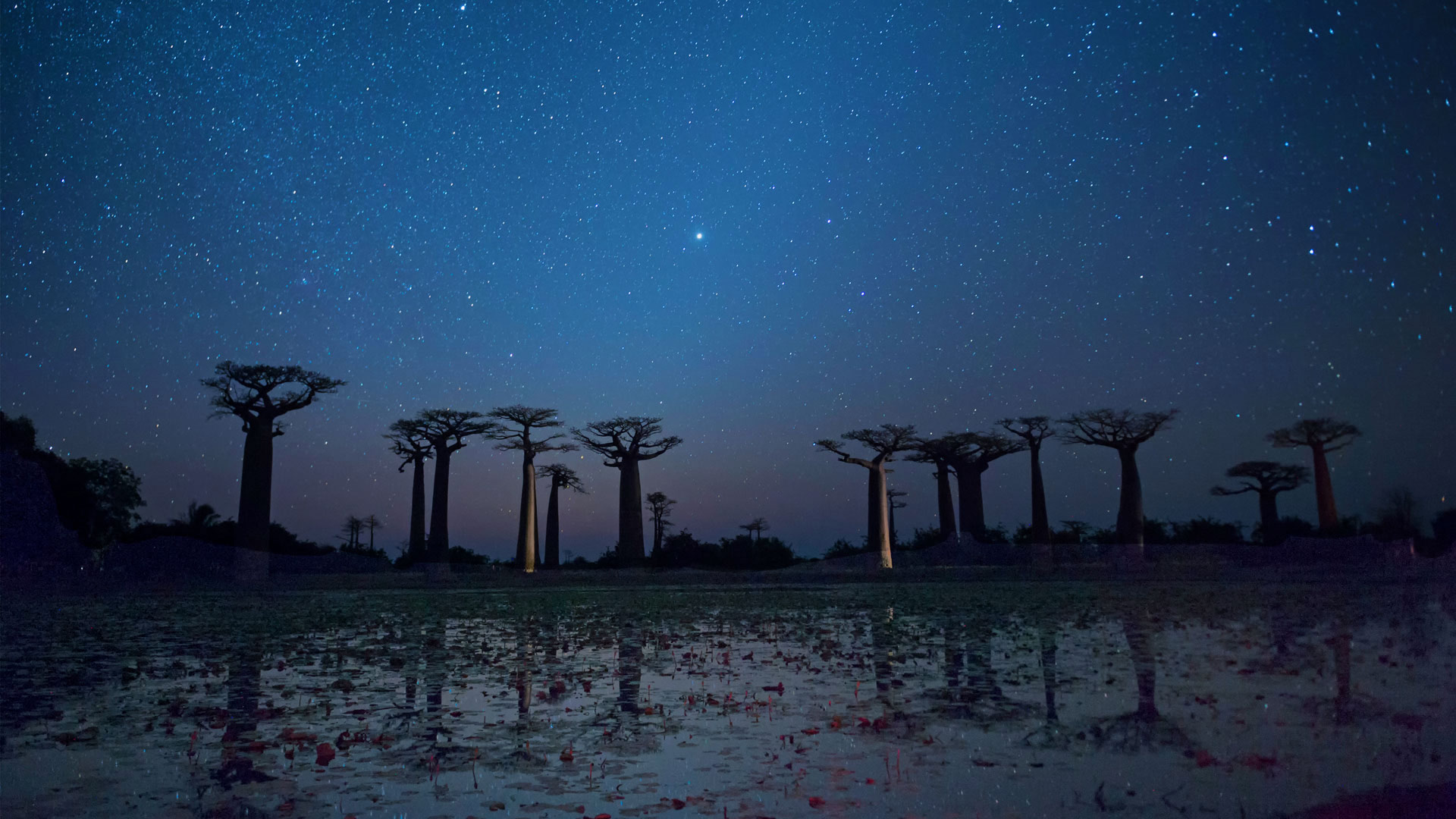标签 马达加斯加 下的文章
日落时分的猴面包树,猴面包树大道,马达加斯加 Baobab trees at sunset, Avenue of the Baobabs, Madagascar (© Framalicious/Shutterstock)
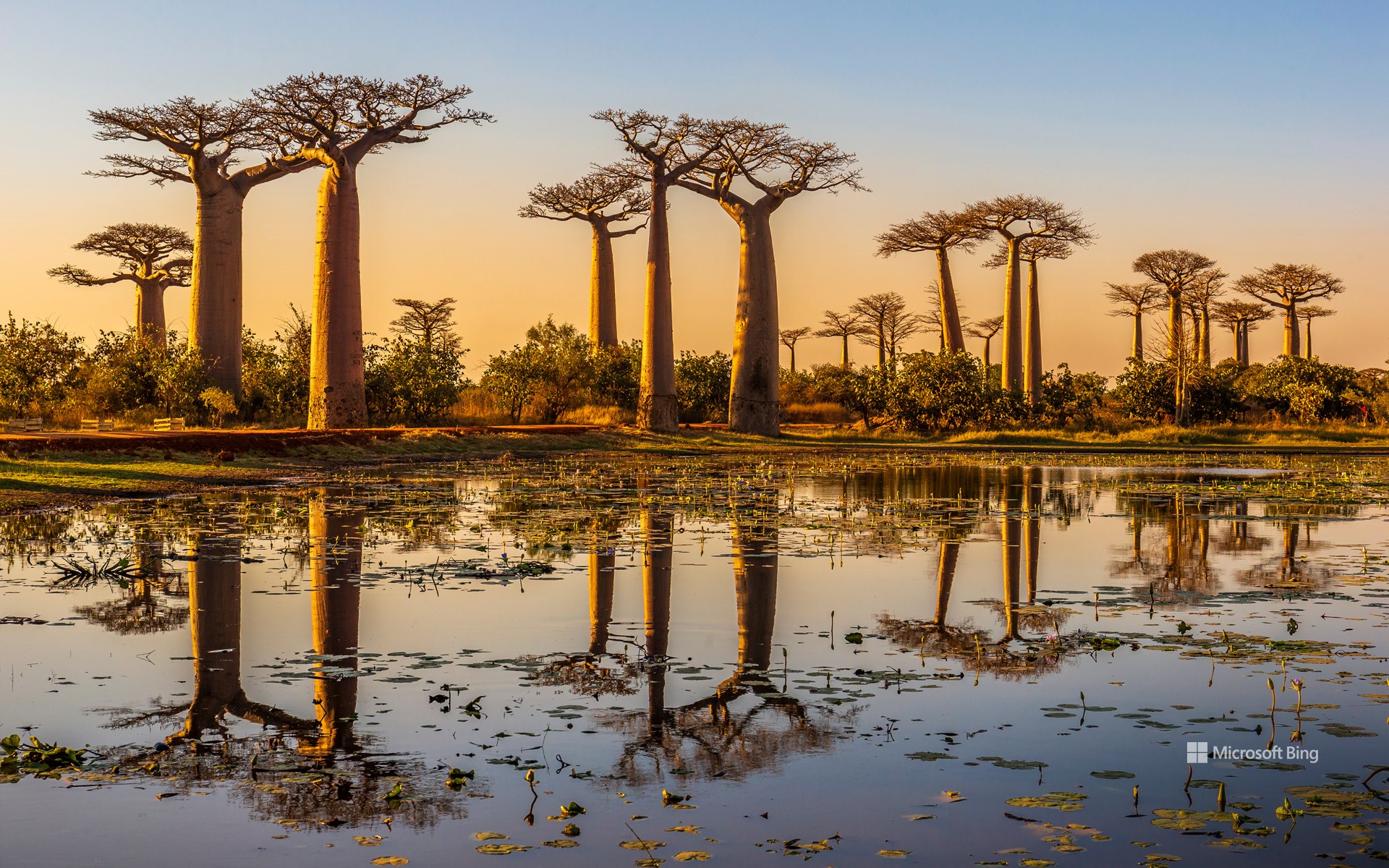
日落时分的猴面包树,猴面包树大道,马达加斯加 Baobab trees at sunset, Avenue of the Baobabs, Madagascar (© Framalicious/Shutterstock)
猴面包树大道 Baobab boulevard
猴面包树大道
从微小的细菌到高大的树木,地球上的生命彼此相互关联。国际生物多样性日旨在庆祝这一维系地球繁荣的生命之网。生物多样性与日常生活息息相关,涵盖可持续农业、清洁用水、气候行动以及灾害防范等诸多领域。生物多样性的减少会增加动物传染病传播的风险(包括动物传染给人类的疾病)。相反,保护生物多样性则有助于增强我们预防和应对大流行病等健康危机的能力。联合国深知生物多样性对当前和未来世代的重要意义,因此每年都设立这个纪念日,提高公众意识并推动保护行动。
今日图片展示的是马达加斯加的猴面包树大道。在马达加斯加西部梅纳贝地区,格兰迪迪埃猴面包树排列在未铺设的8号公路两侧,它们也被称为大猴面包树,是马达加斯加八种猴面包树中最大、最著名的品种。在当地,这些树木被称为“伦纳拉”或“伦尼亚拉”,意为“森林之母”。它们是这座岛国曾经茂密热带森林的遗迹,如今却因为广泛的森林砍伐而孤立地存活着。虽然该地区在2015年被宣布为自然保护区,但这些宏伟的树木依然面临着持续砍伐、稻田排水和季节性火灾等威胁。
International Day for Biological Diversity
Life on Earth, from tiny bacteria to towering trees, is interconnected. International Day for Biological Diversity is about celebrating this web of life that keeps our planet thriving. Biodiversity ties into everything, from sustainable farming and clean water to climate action and disaster preparedness. A decline in biodiversity can increase the spread of zoonotic diseases—those transmitted from animals to humans. In contrast, protecting biodiversity strengthens our ability to prevent and respond to health crises like pandemics. Recognizing its crucial role for current and future generations, the United Nations observes this day each year to raise awareness and foster action for conserving the planet's biological treasures.
Today's image features Madagascar's Avenue of the Baobabs. In the Menabe region of western Madagascar, Grandidier's baobabs line the unpaved Road No. 8. Also known as giant baobabs, they are the largest and most famous of Madagascar's baobab species. Locally known as renala or reniala (mother of the forest), these trees are remnants of the lush tropical forests that once covered this island country. Now, they stand alone as survivors of widespread deforestation. Though the area was declared a natural monument in 2015, these magnificent trees still face threats from further deforestation, rice field runoff, and seasonal fires.
马达加斯加的马苏阿拉国家公园 Masoala National Park in Madagascar (© Dennis van de Water/Shutterstock)
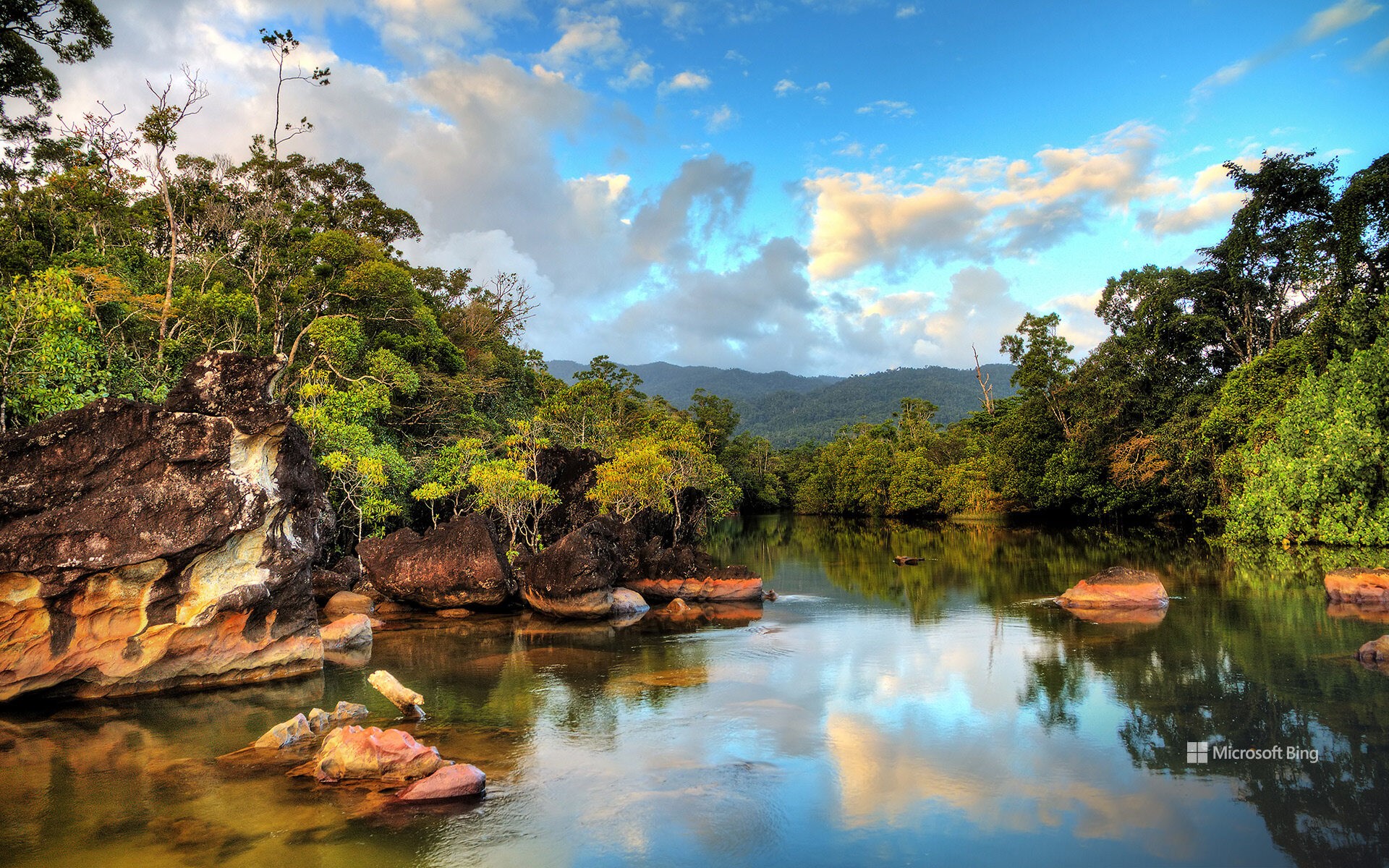
马达加斯加的马苏阿拉国家公园 Masoala National Park in Madagascar (© Dennis van de Water/Shutterstock)
世界环境日快乐! Happy b-earth-day!
世界环境日
世界环境日快乐!1973年,首届世界环境日活动以“只有一个地球”为主题,由联合国组织举办,旨在鼓励人们保护环境。如今,全世界有143个国家庆祝这个节日。今年的主题将聚于焦土地恢复、荒漠化和抗旱能力。
图为马达加斯加马苏阿拉国家公园,它是联合国教科文组织世界遗产阿钦安阿纳雨林的一部分。该公园占地近930平方英里,是野生动物的天堂,栖息着10种狐猴,如红狐猴和指狐猴,还有马岛草鸮和盔鵙等鸟类,以及马达加斯加日间壁虎和番茄蛙等其他物种。曾经,非法的红木采伐者威胁到这一地区的生态环境,但坚定且团结的保护环境的力量使这一地区屹立不倒。因此,让我们从马苏阿拉身上汲取灵感,共同努力守护孕育我们所有人的星球。毕竟,没有第二个地球。
World Environment Day
Happy World Environment Day! First celebrated back in 1973, this UN event is now celebrated in more than 143 countries. This year's theme focuses on land restoration, desertification, and drought resilience.
Pictured here is Madagascar's Masoala National Park, part of the Rainforests of the Atsinanana UNESCO World Heritage Site. This park, which covers nearly 930 square miles, is a wildlife haven harboring hundreds of species including mammals like red ruffed lemurs and aye-ayes, birds like red owls and helmet vangas, reptiles like Madagascar day geckos and tomato frogs, and butterflies, coral species, fish, and sea turtles. The park has been at the forefront of conservation efforts to combat illegal logging, particularly of its rare rosewood trees. So, let's take inspiration from Masoala and champion the planet that cradles us all. After all, there is no planet B.
马尼亚河的卫星图像,马达加斯加 Satellite image of the Mania River in Madagascar (© NASA Earth Observatory image by Joshua Stevens, using Landsat data from the US Geological Survey)
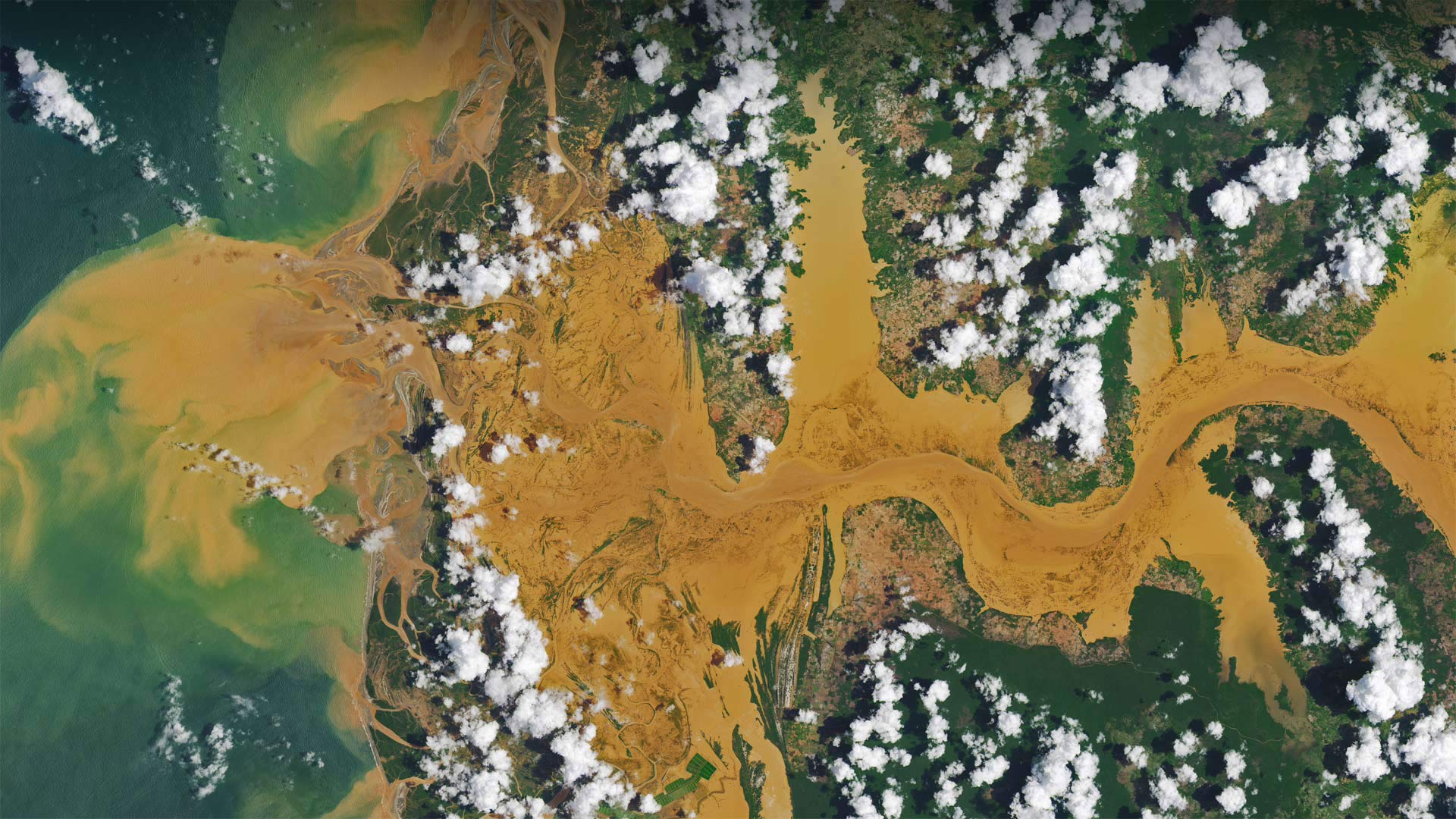
马尼亚河的卫星图像,马达加斯加 Satellite image of the Mania River in Madagascar (© NASA Earth Observatory image by Joshua Stevens, using Landsat data from the US Geological Survey)
Uncommon clouds are gathering
A satellite view of the Mania River in Madagascar allows us to see a curious cloud pattern. It's common for cool, moist marine air to rise and form dense clouds over bodies of water, then for the clouds to evaporate as they drift over warmer, drier land. The opposite is happening here: Puffs of clouds are forming over land, but not over water. That's because Madagascar's tropical rainforests are warm and wet enough that evaporating moisture rises as the day heats up. When it rises high enough, the moisture encounters cooler air, which condenses the water into clouds. Generally speaking, clouds will form where the air is rising, which in this case is only over the land. Above the river, the air is cooler and descending, so no clouds are forming there.
If learning about an unusual weather pattern puts you on cloud nine, then join the United Nations in celebrating World Meteorological Day today. The UN created the annual observance back in 1950 as a day to recognize the contributions of meteorologists to our safety and well-being. We may not all know our cirrus from our cumulus, but we can at least thank meteorologists for letting us know if we should pack an umbrella or sunscreen.
不寻常的云彩正在聚集
马达加斯加马尼亚河的卫星图像让我们看到了一个奇怪的云层模式。很常见的情况是,凉爽潮湿的海洋空气上升,在水体上方形成浓密的云层,然后云层在温暖干燥的陆地上飘浮时蒸发。相反的情况正在这里发生:云层在陆地上形成,但在水面上没有。这是因为马达加斯加的热带雨林足够温暖和潮湿,随着天气变暖,蒸发的水分会上升。当它上升到足够高的位置时,湿气会遇到较冷的空气,从而将水凝结成云。一般来说,在空气上升的地方会形成云,在这种情况下,云只在陆地上形成。在河的上方,空气是凉爽的和下降的,所以那里没有云层形成。
如果你了解到一个不寻常的天气模式,你会感到非常沮丧,那么今天就加入联合国庆祝世界气象日吧。早在1950年,联合国就设立了一年一度的纪念日,以此来表彰气象学家对我们安全和福祉的贡献。我们可能不都知道我们的卷云来自我们的积云,但我们至少可以感谢气象学家让我们知道我们是否应该带伞或防晒霜。
穆龙达瓦附近的格兰迪尔猴面包树林,马达加斯加 Grandidier's baobab forest near Morondava, Madagascar (© Thomas Marent/Minden Pictures)
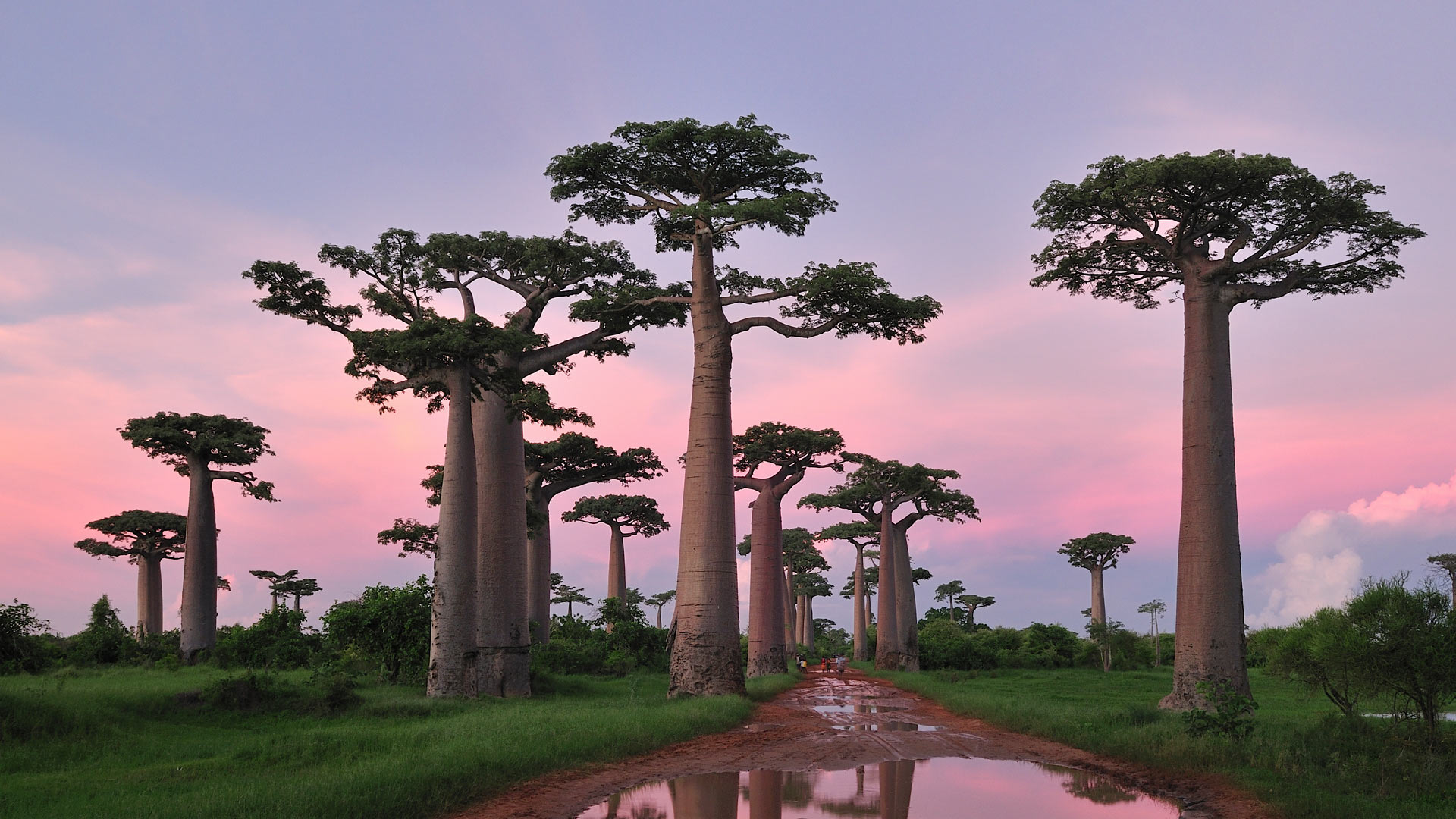
穆龙达瓦附近的格兰迪尔猴面包树林,马达加斯加 Grandidier's baobab forest near Morondava, Madagascar (© Thomas Marent/Minden Pictures)
Beautiful baobabs
Today we celebrate the island nation of Madagascar, located off the southeast coast of Africa, which became independent of France 60 years ago today, in 1960. Madagascar's national tree is the stately baobab—impossibly tall and imposing, but a little silly at the same time. In fact, its nickname is the 'upside-down tree,' since it looks like it was planted with its roots in the air. Six of the world's nine baobab species are native to Madagascar. The trees we're looking at today are the Grandidier baobab, the largest of them all, lining the Avenue of the Baobabs near the western coast.
This species can grow up to 100 feet tall and 36 feet in diameter, a measurement that can actually change as the trunks store water during rainy seasons to help them survive in times of drought. Baobabs are also known for their longevity; those growing along the Avenue of the Baobabs are estimated to be 2,800 years old. Locally, Grandidier baobabs are referred to as 'renala,' or 'mother of the forest.'
